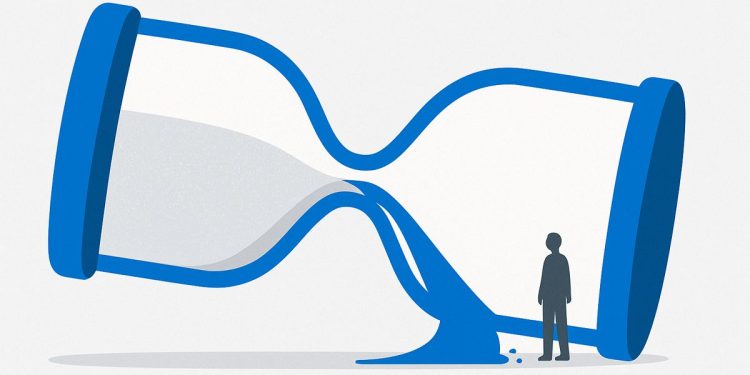Pharmaceutical leader Novo Nordisk uses Claude AI to cut clinical documentation time from weeks to mere minutes, establishing a new industry standard. By integrating Anthropic’s Claude 3.5 Sonnet AI, the company transformed a 10-week reporting process into a task completed in under 10 minutes, according to a DH Arab case study. This report details the architecture, safeguards, and workflow that achieved a 99.9% reduction in document drafting time, allowing scientists to generate compliant reports almost instantly.
Scaling with AI: The RAG Architecture
Novo Nordisk achieved this by implementing a Retrieval-Augmented Generation (RAG) architecture. This system allows Claude to access a curated database of verified protocols, drug data, and past submissions stored in MongoDB Atlas. The AI drafts new reports by pulling exclusively from pre-approved content, ensuring accuracy and consistency. Human-reviewed text is then “locked” for future use, systemically reducing errors.
Novo Nordisk integrated Anthropic’s Claude AI into its core systems using a Retrieval-Augmented Generation (RAG) framework. The AI drafts clinical reports by pulling data and language exclusively from a pre-approved, human-verified library, which drastically accelerates writing while ensuring GxP compliance and consistency across all documents.
Key performance indicators highlight the system’s success:
– Clinical Study Report (CSR) Drafting: Reduced from 15 weeks to under 10 minutes, per a Claude customer story.
– Team Size: Medical writing staff reduced from approximately 50 to a 3-person AI supervision team.
– Regulatory Approval: Review cycles with regulators were shortened by 50%, as noted on AWS re:Invent TV.
From Pilot to Platform
The initial project focused on automating Clinical Study Reports (CSRs). Success led to the expansion of the “NovoScribe” platform within six months to generate device protocols and patient brochures, leveraging Amazon Bedrock connectors and security features. While integrating legacy systems required several months to restructure decades of PDF documents, the core RAG architecture needed little modification. A key benefit was the empowerment of non-technical scientists, who began creating their own report templates. Digitalization Strategy Director Waheed Jowiya noted this democratization of AI tools helped eliminate downstream development bottlenecks.
Guardrails Against Hallucination
To satisfy regulatory demands for accuracy, Novo Nordisk implemented robust guardrails to prevent AI “hallucinations” or fabricated data. The company’s multi-layered defense strategy includes:
1. Strict RAG Confinement: The AI is restricted to using only source-controlled, verified documents.
2. Human-in-the-Loop Review: A qualified expert reviews and approves every AI-generated section before finalization.
3. Full Auditability: All prompts, edits, and system actions are logged to ensure Good Practice (GxP) compliance.
While some studies cite hallucination rates as high as 20% in healthcare AI, internal validation at Novo Nordisk showed a rate of just 1.47%, aligning with the 2024 Nature benchmark for safe AI deployment.
Early Lessons for Peers
Pharmaceutical companies looking to replicate this success can learn from Novo Nordisk’s experience. Key takeaways for a successful AI documentation rollout include:
* Curate a “Gold Standard” Corpus: Invest heavily in creating a high-quality, verified source document library before developing prompts.
* Start Small and Scale: Begin with a single document type to establish a repeatable template before expanding.
* Involve Domain Experts: Ensure subject matter experts are central to the process to build trust and ensure quality.
* Focus on Business Metrics: Measure return on investment (ROI) by tracking cost-per-document instead of raw technical metrics like GPU usage.
What Comes Next
Novo Nordisk continues to expand its AI capabilities, with pilot programs underway to automate the generation of complete Common Technical Documents (CTDs). Data scientists are also exploring Claude’s ability to perform direct analysis of raw clinical trial data. This pioneering work is expected to influence peers like Sanofi, AbbVie, and Genmab, which are already leveraging Claude via Amazon Bedrock. The industry-wide focus is now shifting from the possibility of automation to the challenge of verifying AI outputs at scale, signaling a fundamental change in pharmaceutical R&D.
How did Novo Nordisk reduce clinical documentation time from 10 weeks to 10 minutes?
The company embedded Claude 3.5 Sonnet inside its lab infrastructure and built the NovoScribe platform on Amazon Bedrock. A single CSR that once tied up 40-50 people for 15 weeks is now drafted in <10 minutes by a team of three who only review and lock the AI output. The trick is retrieval-augmented generation: Claude pulls only pre-validated text blocks, so the same approved sentence never has to be re-written.
What does “99.9 % time saving” look like in hard numbers?
- Calendar time: 2.5 months → 10 minutes
- Personnel: 40-50 FTEs → 3 FTEs
- Cost: Novo Nordisk’s entire annual AI budget is still lower than one medical-writer salary
- Quality: regulator review-to-approval cycles have been cut in half and no AI-generated CSR has been rejected to date
How does the company catch “AI hallucinations” before regulators do?
Every paragraph Claude writes is human-locked after first use. If the AI invents a sentence that is not in the locked library, the RAG layer blocks it. In addition:
– explainable prompts force Claude to cite the source table
– automated fact-checkers (Med-HALT style) flag novel statements for manual review
– audit trails are kept for every keystroke, satisfying both GxP and 21 CFR Part 11 expectations
Which other pharma companies are following the same playbook?
Claude for Life Sciences is now used daily at Sanofi, AbbVie and Genmab. Sanofi alone has >2 500 active use-cases, from patient-information leaflets to CTD module 2 summaries. Across the industry, protocol QA accuracy rose from the human baseline of 0.79 to 0.83 (Claude Sonnet 4.5), making AI the new first-pass author rather than a spell-checker.
What still has to happen manually?
- Clinical-trial timelines themselves – AI cannot shorten patient follow-up
- Final sign-off – a qualified person still presses “submit”
- Legacy-data clean-up – ingesting 30-year-old device protocols took several months of manual structuring before Claude could touch them



















